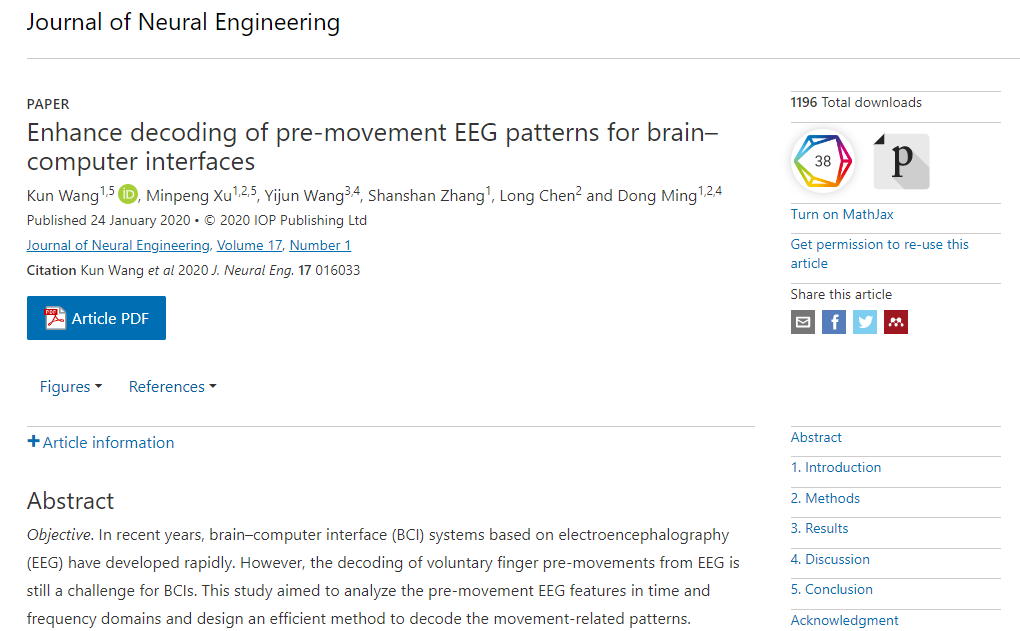Recently, Tianjin University’s Neural Engineering & Rehabilitation Laboratory published a paper titled Enhance decoding of pre-movement EEG patterns for brain-computer interfaces on Journal of Neural Engineering, a top international journal in neural engineering. The paper was bestowed CHINA TOP Cited Paper Award 2021 by the Institute of Physics (IOP) Publishing.

The brain–computer interface (BCI), a core technology of new-generation human-computer hybrid intelligence, directly links the brain to the external world for information exchange. BCI based on movement intention is the most natural pattern of brain-computer interaction and thus is widely studied by BCI researchers. The process of movement intention involves pre-movement motor preparation, post-movement motor execution and motor imagery. Traditional BCI researches on movement intention put more emphasis on decoding electroencephalographic (EEG) features in the process of motor imagery. In comparison, decoding the EEG features in the process of motor preparation will make BCI more quick-responding and more flexible. However, the signals of EEG features induced by motor preparation are so weak that it is difficult to identify them efficiently.
TJU’s team developed a decoding technology to induce these weak signals. Based on the fact that motor preparation potentials and event-related desynchronization (ERD) features are complementary to each other, the team designed a method for rapid extraction and fusion of multi-dimensional time-frequency-space features and thus succeeded in identifying EEG features quickly in the process of motor preparation, greatly improving the efficiency of decoding the EEG movement intention. This method, combined with functional electrical stimulation (FES), can be applied in rehabilitation training for stroke patients, which is expected to improve the timeliness of the coupling of cortical motor intention and muscular activity, thereby greatly improving the rehabilitation effect. In addition, the method can provide technical support for some special groups with limited mobility such as astronauts to use “a third hand” controlled by their brains for a more efficient human-computer interaction.
The China Top Cited Paper Award is bestowed by the Institute of Physics (IOP) Publishing, aiming to award corresponding authors from China who are in the top one per cent of the most-cited articles published within IOP Publishing’s portfolio of journals.
Check the link for the paper:
https://iopscience.iop.org/article/10.1088/1741-2552/ab598f
By Lin Nan
Editor: Eva Yin






